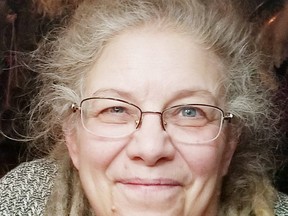Parenting without power struggles

Article content
I first discovered Susan Stiffelman on YouTube. Someone had posted a 90-minute video of a parenting workshop she did, and I watched it countless times – for a while, likely once a week. And every time I watched it, I got more out of it.
Like all the most powerful parenting gurus I’ve studied, she doesn’t deal in tips or tricks or techniques. It’s not a change of a word here or a tone there. It’s a shift in how we view parenting and what we believe about our children and teens. A change in behaviour may be only temporary, but a change of heart and mind is lasting.
Sadly, the video of her workshop is no longer available, but her book is: Parenting Without Power Struggles. In the opening chapter, she discusses the parent’s role as the captain of a ship, calmly and confidently in charge, and able to keep their cool independent of their child’s behaviour.
This doesn’t translate into micromanaging. Not at all. Rather, this is a connected, compassionate, and effective means of piloting the ship known as “home.” In the same way that a ship requires a captain (someone who’s in charge), so does your home.
So what happens when no one is in charge? She calls this “the two lawyers.” Both the parent and the child or teen jockey for advantage and marshal arguments to “win.” Parents who engage in these power struggles have forfeited their role as captain of the ship.
And what about when the child is in charge? We relinquish our role as captain when we blame our child for what we think, how we feel, or what we do, when we try to make our child or teen responsible for our ability – or inability – to remain calmly in charge.
When we react because our child has pushed our button, the child is in charge. When we bribe or threaten or punish, the child is in charge, and things seldom go well on a ship where a passenger is in charge.
Here’s an example of a time I got it right. I was driving my two grandsons – ages five and three – home from Burlington when they started fighting in the backseat. Instead of resorting to an old strategy of yelling and demanding and threatening, I pulled into a parking lot, turned off the car, turned on some classical music, leaned back and closed my eyes.
Silence.
After a few moments, the five-year-old said, “What are you doing?” I said, “I’m waiting.” He asked, “For what?” And I replied, “For the two of you to finish your fight.”
Silence.
After about half a minute, he said, “Okay. We’re done.” And I said, “No rush, honey. I’m happy to wait.”
A few moments later, he said, “I want to go home.” And I said, “Me too. Just let me know when you’re finished and we’ll go home.”
Within about two minutes we were back on the road, and it was a calm and peaceful trip home. I did it once – and never had to do it again.
Chapter 5 addresses frustration, Chapter 6 deals with whining, meltdowns, resistance and aggression and Chapter 7 teaches how to get kids to cooperate – all from a place of being calmly and confidently in charge. Well worth the read.
Want to know more about Choice Theory? Email me at sue@sanerparenting.ca and I’ll send you PDFs of the booklet Who’s Driving YOUR Car? and the handout Six Things: How to create healthy boundaries. And as always, I welcome your questions.
Postmedia is committed to maintaining a lively but civil forum for discussion. Please keep comments relevant and respectful. Comments may take up to an hour to appear on the site. You will receive an email if there is a reply to your comment, an update to a thread you follow or if a user you follow comments. Visit our Community Guidelines for more information.